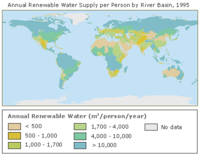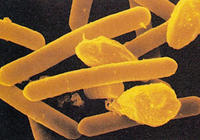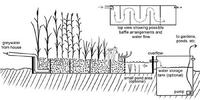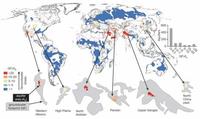-
Warming will disturb nutrients balance in drylands, affecting food production
Drylands cover about 41 percent of Earth’s land surface and support more than 38 percent of the world’s population. As the world’s population grows, people will increasingly rely on marginal lands — particularly drylands — for production of food, wood and biofuels. Trouble is, an increase in aridity due to global warming will disturb the balance of nutrients in the soil and reduce productivity of the world’s drylands, a landmark study predicts. Increasing aridity is associated with a reduction in carbon and nitrogen in the soil and an increase in phosphorus.
-
-
Burping for power: Tapping cow burps for natural gas
Scientists in Argentina have developed a method to transform the gas created by cows’ digestive systems into fuel. The technique channels the digestive gases from bovine stomach cavities through a tube and into a tank, where the gases, called eruptos (burps) in Spanish, are processed to separate methane from other gases such as carbon dioxide.
-
-
More than 500 million people could face increasing water scarcity

Both freshwater availability for many millions of people and the stability of ecosystems such as the Siberian tundra or Indian grasslands are put at risk by climate change. Even if global warming is limited to 2 degrees above pre-industrial levels, 500 million people could be subject to increased water scarcity.
-
-
Small changes in agricultural practices reduce produce-borne illness

Foodborne illness sickens an estimated 9.4 million and kills around 1,300 annually in the United States, according to the Centers for Disease Control and Prevention. Produce accounts for nearly half the illnesses, and 23 percent of the deaths. Researchers have identified some agricultural management practices in the field that can either boost or reduce the risk of contamination in produce from two major foodborne pathogens: salmonella, the biggest single killer among the foodborne microbes, and Listeria monocytogenes.
-
-
Innovative salmonella sensing system
Foodborne illnesses making one in six Americans — or forty-eight million people — sick each year. Of these people sickened, 128,000 end up in the hospital, according to the Centers for Disease Control and Prevention, while 3,000 die. A new approach to detecting food contamination enables real-time testing of food and processing plant equipment.
-
-
One in 2,000 people in the U.K. carry mad cow disease proteins

Variant Creutzfeldt-Jakob disease (vCJD) is a degenerative brain disease — often called the human form of bovine spongiform encephalopathy (BSE) or “mad cow disease.” It emerged after widespread exposure to BSE prions in the late 1980s and early 1990s through contaminated meat products in the food chain. Around one in 2,000 people in the United Kingdom may carry variant CJD proteins, concludes a large scale survey published on BMJ.
-
-
Innovative device speeds up food-pathogen detection
Researchers have developed a system that concentrates foodborne salmonella and other pathogens faster than conventional methods by using hollow thread-like fibers that filter out the cells, representing a potential new tool for speedier detection. The machine, called a continuous cell concentration device, could make it possible to routinely analyze food or water samples to screen for pathogens within a single work shift at food processing plants.
-
-
Discovery points way to treatment of lethal toxin botulism

Botulinum neurotoxins are produced by Clostridium botulinum and cause the possibly fatal disease botulism, which impedes nerve cells’ ability to communicate with muscles and can lead to paralysis and respiratory failure. The botulinum toxin has also been identified as a potential biological weapon against a civilian population. Scientists have decoded a key molecular gateway for the toxin that causes botulism, pointing the way to treatments that can keep the food-borne poison out of the bloodstream.
-
-
Shutdown paralyzes U.S. food safety regime
Food safety experts this week said that the government shutdown is putting Americans at risk, as the shutdown caused all inspections of domestic food, except meat and poultry, to be halted. The shutdown comes on top of earlier budget cuts to food safety-related agencies, cuts which have already made the food safety inspection regime weaker, so that the shutdown, in the words of one knowledgeable observer, is “creating the potential for a real public health crisis.”
-
-
Drug-resistant Salmonella outbreak in seven states
The Centers for Disease Control and Prevention (CDC) said that seven strains of Salmonella Heidelberg bacteria have been identified as being linked to an outbreak in seven states. The outbreak, associated with Foster Farm chicken product, has so far sickened 278 people. The outbreak strains of Salmonella Heidelberg are resistant to several commonly prescribed antibiotics. The CDC unit tracking disease outbreaks has been working with less than half its personnel since the government shutdown began, and had had to call back thirty furloughed inspectors.
-
-
Helping farmers plow through new, complex food safety regulations
The recently passed Food Safety Modernization Act set safety standards on how farmers grow, harvest, and handle fresh produce to reduce the risk of foodborne diseases. The new regulations to minimize food safety risk include testing for water safety and better managing manure storage. Agricultural extension educators should take a flexible approach in teaching farmers about the changing landscape of food safety regulations, researchers say.
-
-
Bolstering water security in a crowded world

With limited water and the increasing number of people depending on it – there will be more than nine billion people on the planet by 2050 — water security is tenuous. Integrated water management plans using “blue,” “green,” and “gray” water, however, can increase water security by allowing agriculture to rise to the challenge of feeding a growing world population while leaving enough water for other uses.
-
-
“In 30 years Iran will be a ghost town” if the country’s water situation does not improve

Issa Kalantari, a former agriculture minister during the presidency of Ayatollah Hashemi Rafsanjani and currently and advisor to President Hassan Rouhani’s cabinet, says Iran’s water crisis was especially grave. “Our main problem that threatens us, that is more dangerous than Israel, America or political fighting, is the issue of living in Iran. It is that the Iranian plateau is becoming uninhabitable”; “If this situation is not reformed, in 30 years Iran will be a ghost town.”
-
-
Today’s worst watershed stresses in U.S. may become tomorrow’s new normal
Nearly one in ten U.S. watersheds is “stressed,” with demand for water exceeding natural supply, according to a new analysis of surface water in the United States. What is more, the lowest water flow seasons of recent years — times of great stress on rivers, streams, and sectors that use their waters — are likely to become typical as climates continue to warm.
-
-
U.S. makes progress toward a National Water Census
Growing populations, increased energy development, and the uncertain effects of a changing climate magnify the need for an improved understanding of water use and water availability. No comprehensive and current national assessment of water resources exists, however. A USGS report released in April, Progress Toward Establishing a National Assessment of Water Availability and Use, fulfilled a requirement under the 2009 SECURE Water Act for the Secretary of the Interior to report to Congress on progress made in implementing the national water availability and use assessment program, also referred to as a National Water Census.
-
- All
- Regional
- Water
- Biometrics
- Borders/Immig
- Business
- Cybersecurity
- Detection
- Disasters
- Government
- Infrastructure
- International
- Public health
- Public Safety
- Communication interoperabillity
- Emergency services
- Emergency medical services
- Fire
- First response
- IEDs
- Law Enforcement
- Law Enforcement Technology
- Military technology
- Nonlethal weapons
- Nuclear weapons
- Personal protection equipment
- Police
- Notification /alert systems
- Situational awareness
- Weapons systems
- Sci-Tech
- Sector Reports
- Surveillance
- Transportation
Advertising & Marketing: advertise@newswirepubs.com
Editorial: editor@newswirepubs.com
General: info@newswirepubs.com
2010-2011 © News Wire Publications, LLC News Wire Publications, LLC
220 Old Country Road | Suite 200 | Mineola | New York | 11501
Permissions and Policies
Editorial: editor@newswirepubs.com
General: info@newswirepubs.com
2010-2011 © News Wire Publications, LLC News Wire Publications, LLC
220 Old Country Road | Suite 200 | Mineola | New York | 11501
Permissions and Policies
